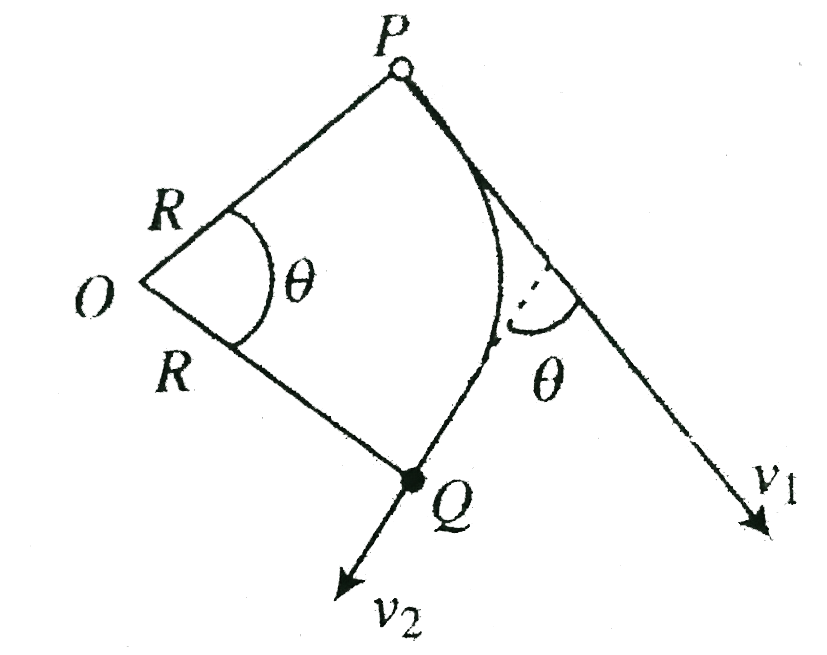During a accelerated motion of a particle
average velocity of the particle is always less than its final velocity
average velociyt of the particle is always greater than its final velocity
average velocity of the particle may be zero also
average velocity of the particle is half its final velocity
The correct Answer is:C
To solve the question regarding the average velocity of a particle during accelerated motion, we will analyze the given statements step by step.
1. Understanding Average Velocity:
The average velocity (V_avg) of a particle is defined as the total displacement (s) divided by the total time (t) taken. Mathematically, it can be expressed as:
Vavg=st
2. Displacement in Accelerated Motion:
For a particle undergoing accelerated motion, the displacement can be calculated using the formula:
s=ut+12at2
where u is the initial velocity, a is the acceleration, and t is the time.
3. Considering the Case When Motion Starts from Rest:
If the motion starts from rest, then u=0. Thus, the displacement simplifies to:
s=12at2
4. Final Velocity in Accelerated Motion:
The final velocity (v) of the particle can be calculated using the formula:
v=u+at
Again, if the motion starts from rest (u=0), this simplifies to:
v=at
5. Calculating Average Velocity:
Now substituting the expressions for displacement and time into the average velocity formula:
Vavg=st=12at2t=12at
Since v=at, we can express average velocity as:
Vavg=12v
6. Analyzing the Statements:
- Statement 1: Average velocity of the particle is always less than its final velocity.
- This is true since Vavg=12v.
- Statement 2: Average velocity of the particle is always greater than its final velocity.
- This is false.
- Statement 3: Average velocity of the particle may be 0.
- This is false in the context of accelerated motion starting from rest.
- Statement 4: Average velocity of the particle is half of its final velocity.
- This is true when the motion starts from rest, but not necessarily true for all cases.
7. Conclusion:
The correct statement is that the average velocity of the particle is always less than its final velocity.
Final Answer:
The correct option is: Average velocity of the particle is always less than its final velocity.
The average velocity (V_avg) of a particle is defined as the total displacement (s) divided by the total time (t) taken. Mathematically, it can be expressed as:
Vavg=st
For a particle undergoing accelerated motion, the displacement can be calculated using the formula:
s=ut+12at2
where u is the initial velocity, a is the acceleration, and t is the time.
If the motion starts from rest, then u=0. Thus, the displacement simplifies to:
s=12at2
The final velocity (v) of the particle can be calculated using the formula:
v=u+at
Again, if the motion starts from rest (u=0), this simplifies to:
v=at
Now substituting the expressions for displacement and time into the average velocity formula:
Vavg=st=12at2t=12at
Since v=at, we can express average velocity as:
Vavg=12v
- Statement 1: Average velocity of the particle is always less than its final velocity.
- This is true since Vavg=12v.
- Statement 2: Average velocity of the particle is always greater than its final velocity.
- This is false.
- Statement 3: Average velocity of the particle may be 0.
- This is false in the context of accelerated motion starting from rest.
- Statement 4: Average velocity of the particle is half of its final velocity.
- This is true when the motion starts from rest, but not necessarily true for all cases.
The correct statement is that the average velocity of the particle is always less than its final velocity.
The correct option is: Average velocity of the particle is always less than its final velocity.
Topper's Solved these Questions
- KINEMATICS 1BOOK - DC PANDEY ENGLISHCHAPTER - KINEMATICS 1EXERCISE - MCQ_TYPE
27 Videos
- KINEMATICS 1BOOK - DC PANDEY ENGLISHCHAPTER - KINEMATICS 1EXERCISE - COMPREHENSION_TYPE
19 Videos
- KINEMATICSBOOK - DC PANDEY ENGLISHCHAPTER - KINEMATICSEXERCISE - INTEGER_TYPE
10 Videos
- LAWS OF MOTIONBOOK - DC PANDEY ENGLISHCHAPTER - LAWS OF MOTIONEXERCISE - Medical entrances gallery
39 Videos
Similar Questions
If ar and at represent radial and tangential accelerations, the motion of a particle will be uniformly circular if
View SolutionSTATEMENT -1 : In non - uniform circular motion acceleration of a particles is along the tangent of the circle .
STATEMENT -2 : In uniform circular motion acceleration of a particle is zero .
STATEMENT -3 : In no - uniform circular motion acceleration of a particle is towards the centre of the circle.
View SolutionIn the following questions a statement of assertion (A) is followed by a statement of reason ( R).
A : A uniform circular motion have non uniform acceleration .
R: The direction of acceleration of a particle in uniform circular motion changes continuously .
View SolutionFollowing are four different relations about displacement, velocity and acceleration for the motion of a particle in general. Choose the incorrect one (s)
View SolutionIn circular motion of a particle,
View SolutionDuring uniform circular motion of a particle
View SolutionThe phase difference between the instantaneous Velocity and acceleration of a particle executing simple harmonic motion is
View SolutionWrite the expressions for velocity and acceleration of a particle executing simple harınonic motion in terms of its displacement.
View SolutionAssertion : Velocity and acceleration of a particle are given as,
v=ˆi−ˆjanda=−2ˆi+2ˆj This is a two dimensional motion with constant acceleration.
Reason : Velocity and acceleration are two constant vectors.
View SolutionA particle describes an angle θ in a circular path with a constant speed v. Find the a charge in the velocity of the particle and b average acceleration of the particle during the motion in the curve (circle).
 .
.
View Solution
